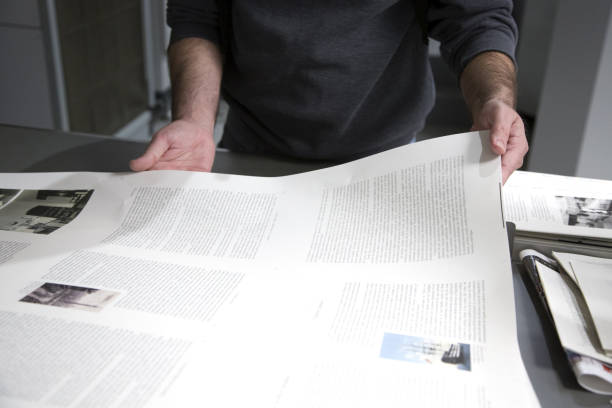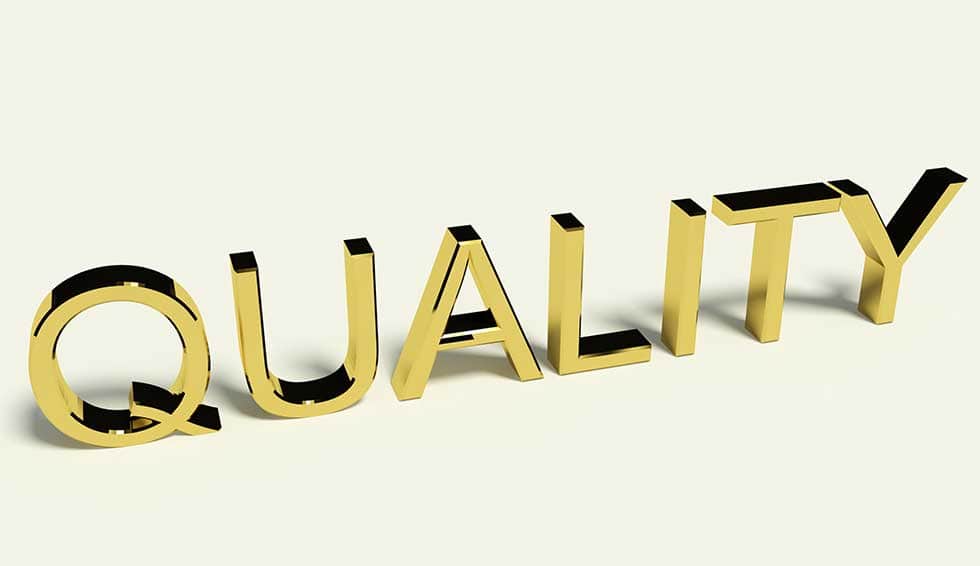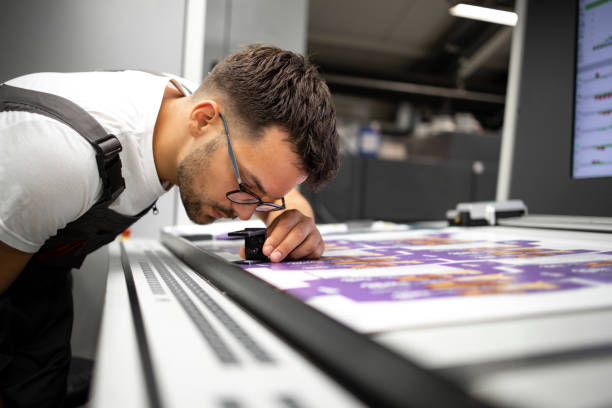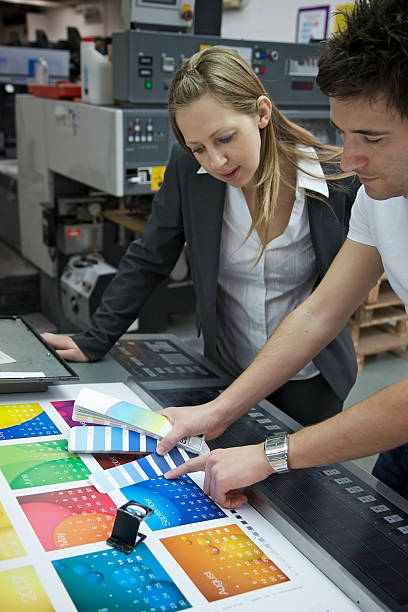
The best book printers Australia have to offer are out there ! For authors or self-publishers, selecting the right book printer in Australia is vital. It ensures your print books have a professional appearance and reader appeal. The cover, being the first thing readers see, must be captivating and well-designed. Considerations include colour scheme, cover type, trim size, and page count when choosing a printer.
Professional book printers in Australia bring years of experience to the table. They offer expert advice and a deep understanding of printing options. This helps you make choices that align with your needs and goals. They use advanced technology to ensure high-quality results, even for large print runs.
Reputable book printing companies in Australia guarantee consistent colour reproduction. They deliver vibrant colours and patterns that boost your book’s visual appeal and readability. They cater to a wide range of materials, from booklets and brochures to novels and photo books. Additional services include binding, lamination, and booklet finishing.
Introduction to Book Printing in Australia
The Australian book printing industry is vast, with over 4,000 companies offering various printing services. Yet, only a tiny fraction, about 0.1%, is dedicated to print-on-demand (POD) book printing. For self-publishers, finding the right book printing service is vital to bring their stories to life. These services often include a variety of binding options for bound books, such as perfect bound and PUR bound books, catering to both customization and professional quality needs.
The Importance of Choosing the Right Book Printer
The book printing process involves several critical steps. These include selecting the right paper and cover materials, and choosing the best binding method. The right choices can elevate a book from ordinary to exceptional. It’s crucial to pick a high-quality printer with expertise in book publishing to ensure your book meets your standards and stands out.
An Overview of the Book Printing Process
- Choosing the right paper types and cover materials
- Determining the optimal binding method for your book
- Ensuring the layout, design, and typography are of the highest quality
- Coordinating with the printer to achieve the desired aesthetic and functionality
By working with a reputable book printer in Australia, self-publishers can overcome the complexities of the printing process. They can deliver a final product that reflects their unique vision and connects with readers.
Choosing the Right Book Printers Australia has to offer

When it comes to choosing a book printing company, several factors should be at the forefront of your decision-making process. First and foremost, ensure the company can meet your quality book printing needs. Look for a company with a solid reputation for producing high-quality books with precise printing and binding. Experience is also crucial; a company that has successfully printed books similar to yours, such as family history books or self-publishing projects, can offer valuable insights and expertise.
Pricing and turnaround time are also important considerations. Affordable book printing doesn’t have to mean sacrificing quality. Seek out a company that offers competitive pricing while maintaining high standards. Additionally, evaluate their customer service and support. A reliable book printing company should provide expert advice and guidance throughout the printing process, ensuring a smooth and stress-free experience.
Colour Scheme: Black and White or Full Colour?
The decision between black and white or full colour printing for books is crucial. Black and white printing is often more affordable and eco-friendly. It’s a favourite for fiction and novels. Yet, for books that need to pop with colour, like photography and art, full colour is the way to go.
Some Australian book printers can blend black text with colourful pages. It’s key to talk to your printer about what you need. This way, you can find the perfect colour scheme for your book.
- Black and white printing uses fewer ink cartridges, making it a more suitable option for book printing services.
- Fiction books and novels are primarily produced in black and white, while photography and art books require a wide range of colors.
- Some custom book printing incorporates both black texts and colors throughout the book.
- Printing in black and white can be cost-effective as it uses less ink, making it a money-saving option.
- Printing in black and white is considered eco-friendly for book production.
Book Cover Types: Hardcover vs Softcover
The book cover is the first thing readers notice, making it crucial to select the right type. Hardcover books are known for their durability and are often linked with high-quality, prestigious publications. On the other hand, softcover or paperback books are more affordable to produce. They are ideal for non-commercial works or for new authors.
Advantages of Hardcover Books
Hardcover books can have various finishes like matte, glossy, or laminated covers. They also offer customised features such as endpapers, book cloth, and dust jackets. The spine width includes an extra 5mm on both sides. The cover dimensions are 40mm larger in height and width, thanks to a 20mm bleed on all edges. Additionally, hardcover books have a hardboard cover that overlaps inner pages by 3mm for extra protection.
Benefits of Softcover Books
Softcover books have a thinner paper or cardboard cover, often with a glued binding. Their covers are made from light cardstock, while hardcovers are thicker and more rigid. When choosing between hardcover and softcover, consider the book’s genre, target audience, and budget. Softcover is a cost-effective option for new authors or self-publishers. Hardcover books, however, are better suited for reference works, literary classics, and books expected to last a long time.
Book Printers Australia: Trim Size and Page Count Considerations

In Australia, the trim size and page count are key when printing books. The trim size, or the book’s final dimensions, is influenced by genre, audience, and publishing norms. Common sizes include 148x210mm, 210x297mm & 210x210mm.
The page count affects both cost and production method. Shorter books might be printed digitally or in small runs. Longer books often need offset printing for bigger quantities. Australian book printers can guide you on the best trim size and page count for a professional look and industry standards.
Consider these factors to make informed choices:
- Common trim sizes used in the publishing industry, such as 148x210mm, 210x297mm & 210x210mm.
- The impact of page count on production method and cost, with shorter books potentially better suited for digital or short-run book printing and longer books requiring offset printing
- The advice and expertise of experienced book printers in Australia to determine the most suitable trim size and page count for your project
By carefully considering these factors, you can ensure your book is printed to the highest standards and meets the expectations of your readers.
Short Run vs Offset Printing: Which is Right for You?
In Australia, authors face a choice between short-run digital printing and traditional offset printing for their books. Each method has its own benefits, making the decision dependent on the project’s specific needs.
The Advantages of Short Run Book Printing
Short-run digital printing is ideal for those needing small book quantities. It circumvents the high setup costs of offset printing, making it economical for book launches, market tests, or backlist titles. This method allows for printing as few as 50 books, offering flexibility and affordability.
When to Choose Offset Printing for Larger Quantities
Offset printing is best for larger print runs, typically over 1,000 copies. Although it starts with a higher cost, it becomes more cost-effective for big orders. It’s perfect for authors confident in their book’s market success and potential sales volume.
The decision between short-run digital printing and offset printing hinges on your project’s size, budget, and timeline. Understanding each method’s benefits helps authors make the right choice for successful book printing in Australia.
Services and Capabilities of Book Printers Australia has to offer

Book printers offer a diverse range of services and capabilities to cater to the varied needs of authors and publishers. One of the primary services is offset printing, a traditional method that uses metal plates to transfer ink onto paper. This technique is ideal for large print runs and delivers high-quality results. On the other hand, digital printing is a more modern approach that uses digital technology, making it perfect for smaller print runs and providing quick, efficient, and high-quality outcomes.
Binding options are another critical service offered by book printers. Perfect binding, which involves gluing the pages together at the spine, is popular for paperback books and provides a professional finish. For those seeking durability, hard cover book printing is an excellent choice, offering a robust and long-lasting product. Additionally, many book printers can print colour pages, adding an extra dimension to your book, especially for genres like photography or art.
Self-publishing services are also commonly offered, helping authors produce and distribute their own books. These services can be invaluable for authors looking to maintain control over their work and reach their audience directly.
Book Printers Australia: What to Look for in a High-Quality Printer
Choosing a book printer in Australia requires careful consideration of their quality standards and customer service. Opt for printers that utilise premium materials, such as acid-free, FSC-certified papers. They should also offer a variety of binding options, from perfect binding to saddle-stitching, to meet your specific requirements.
Evaluating Print Quality and Materials
High-quality book printers in Australia employ premium materials in their printing process. This includes the use of acid-free and FSC-certified papers, ensuring your books are both durable and environmentally friendly. Furthermore, they should provide a range of binding choices, from the classic perfect binding to the versatile saddle-stitching. This flexibility allows you to select the binding option that best suits your publication.
Turnaround Times and Customer Service
- Assess the printer’s turnaround times and their ability to meet your deadlines. Reliable customer service and clear communication throughout the printing process are crucial. They significantly impact your overall experience and the final quality of your book.
- Comparing different book printers in Australia can help you find the ideal partner for your publishing vision.
Seek out book printers in Australia that are dedicated to quality, flexibility, and exceptional customer service. By examining the materials they use, their turnaround times, and their communication, you can ensure a positive book-printing experience.
Support and Resources for Authors
As an author, having access to support and resources can make a significant difference in the book printing process. A reputable book printing company should offer expert advice and guidance, helping you navigate the complexities of printing. Many companies provide online book printing quotes, allowing you to get an estimate of the costs involved quickly and easily.
Custom book printing services are also available, enabling you to create a unique and personalized book that stands out. Book printers often offer a variety of paper stocks, helping you choose the right paper to complement your book’s content and style. Additionally, cover design services can assist you in creating a professional and eye-catching cover, crucial for attracting readers.
Portfolio and Testimonials: Gauging Printer Reliability

When selecting a book printing company, it’s essential to gauge their reliability and quality. One effective way to do this is by reviewing their portfolio. A comprehensive portfolio showcases the company’s work, providing examples of books they have printed and demonstrating their capabilities.
Customer testimonials are equally important. Positive feedback from satisfied customers can give you confidence in the company’s level of service and quality. Look for testimonials that highlight the company’s attention to detail, customer service, and overall satisfaction with the final product.
Understanding the Australian Book Printing Industry
The Australian book printing industry is a dynamic and competitive market, with numerous companies offering a wide range of services. Understanding the different types of book printing companies and the services they provide can help you make an informed decision.
Book printers specialize in printing books and may offer services such as offset printing, digital printing, and various binding options. Self-publishing companies focus on helping authors publish their own books, providing services like printing, binding, and distribution. Online book printers offer the convenience of online services, including printing, binding, and shipping, making the process more accessible and efficient.
By familiarizing yourself with the different types of book printing companies and their offerings, you can choose the right partner to meet your book printing needs and achieve your publishing goals.
Book Printers Australia – A Conclusion
Choosing the right book printers Australia is crucial for self-publishers aiming for a professional finish. Considerations include colour scheme, cover type, trim size, page count, and printing method. These factors ensure your book meets industry standards and appeals to your target audience.
Partnering with a top-notch book printing service in Australia can turn your publishing dreams into reality. With the right printing partner, your book will not only look impressive but also connect with readers on a deeper level.
Quality book printing in Australia is key to a successful self-publishing journey. By picking the right printer, you can create a product that embodies your vision and engages your audience effectively.








